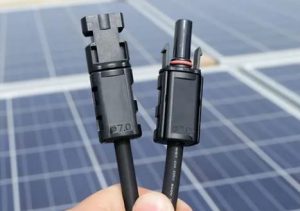How to Find Solar Panel Positive and Negative Terminals?
Identifying the positive and negative terminals of a solar panel is a fundamental skill for anyone involved in the installation, maintenance, or usage of solar power systems. Correctly connecting these terminals is crucial for the system's efficiency and safety. This guide will walk you through the steps and tools needed to accurately determine the solar panel positive and negative terminals, ensuring your solar setup operates at its best.

Visual Inspection
Start with a simple visual inspection. Manufacturers typically label solar panel terminals with a plus (+) for the positive and a minus (-) for the negative. These labels can be found on the back of the panel, near the terminal connections. Besides the labels, the wiring color code can also give clues: red wires often indicate positive, and black wires denote negative. However, relying solely on wire colors is not recommended due to variations in manufacturing practices.
Consult the Manual
Always refer to the solar panel’s user manual or specification sheet provided by the manufacturer. These documents contain detailed information about the panel's electrical characteristics, including the location and identification of the positive and negative terminals. Manufacturers might also include diagrams or pictures to help users correctly identify these terminals.
Using a Multimeter
A multimeter is an indispensable tool for identifying solar panel positive and negative terminals. Here's how to use it:
- Set the Multimeter: Turn your multimeter to the DC voltage setting. Solar panels generate direct current (DC), so it's essential to measure the voltage in this mode.
- Connect the Probes: Touch the multimeter’s red probe to one of the solar panel’s terminals, and the black probe to the other terminal.
- Read the Multimeter: A positive reading on the multimeter indicates that the red probe is touching the positive terminal, and the black probe is touching the negative terminal. Conversely, a negative reading suggests that the probes are reversed, identifying which terminal is which based on the orientation of the probes.
Sunlight Is Essential
For an accurate measurement, ensure the solar panel is exposed to sunlight. The multimeter can only measure the voltage output when the panel is actively generating electricity. Even on cloudy days, solar panels can produce voltage, but direct sunlight yields the most accurate results.
Safety First
When handling solar panels and electrical testing equipment, prioritize safety. Wear protective gear if necessary, and ensure you're not exposing yourself to electrical hazards. If you're unsure about the process or the readings you're getting, consult a professional.
Solar panel positive and negative terminals are the starting points for harnessing the sun’s energy efficiently and safely. Whether you’re setting up a new solar power system, troubleshooting, or performing routine maintenance, correctly identifying these terminals is key to a successful solar installation. Armed with the right knowledge and tools, you can ensure your solar panels are correctly configured to provide maximum power output and longevity.